Tactical Analysis: Unai Emery’s Aston Villa
Spain’s Basque Country harbors some of the greatest architects in the world. Mikel Sanz de Prit and César Azkarate are great examples of that, the architects who have designed San Mames, one of the most beautiful stadiums in the world. Another Basque architect, albeit of a different nature, would be Mr. Europa League himself, Unai Emery. A serial European champion, Unai Emery has already built himself an incredible CV, with his most recent success coming with Villarreal, leading the Valencian club to their first ever UEFA Europa League, a title he’s claimed 4 times, 3 with his former club and Villarreal rival Sevilla.
As a result of his success in Spain, Aston Villa sought to hire him, bringing him back for his second Premier League stint after his time with Arsenal, whom he beat in the semi-final of the Europa League with Villarreal. Many were critical of his time in London, however, it is a rather smart hire as not only is Emery successful in the premier competition that Aston Villa yearns for, but he is a man who is seeking to rebuild his reputation in England. Known to be a consistently effective coach, his brand of compact defensive, but not risk-averse football brought impressive success early in his coaching career.
Although his most successful runs came in international competition, Emery’s teams are known to be consistent in league performance, leading all three Spanish clubs he coached to consecutive top 4 finishes, even after significant departures, such as Mata, David Silva and David Villa during his time at Valencia. After the significant sale of Jack Grealish, and the ability to buy and spend on players, Aston Villa will look to finally shoot for the stars and aim for the Europa League title.
Defensive Phase
Notoriously known for being a conservative manager in his approach, it is fair to say that Emery has mastered the art of defensive coaching. Emery’s teams defend in an extremely compact 4-4-2 shape, which operates mainly in the central-half space areas, forcing the opposition to play using width. The lack of wingers and use of central midfielders as mezzalas instead aid the goal of Emery’s structure, to stay compact and when on the counter, build through the middle. However, with classic wingers like Leon Bailey and Emiliano Buendia in his ranks, Emery has the option for the best of both worlds.
As shown in the below photo, Emery demands from his team to press leading with the two strikers and based on the opposition’s ball movement, press leading with the mezzalas if need be. Even Leon Bailey, a winger by trade, was deployed in this role. Due to the tight nature of Bailey’s positioning to the central-half space area, when on the counter, Bailey can cut into his left through the central area, making him a direct threat on goal.
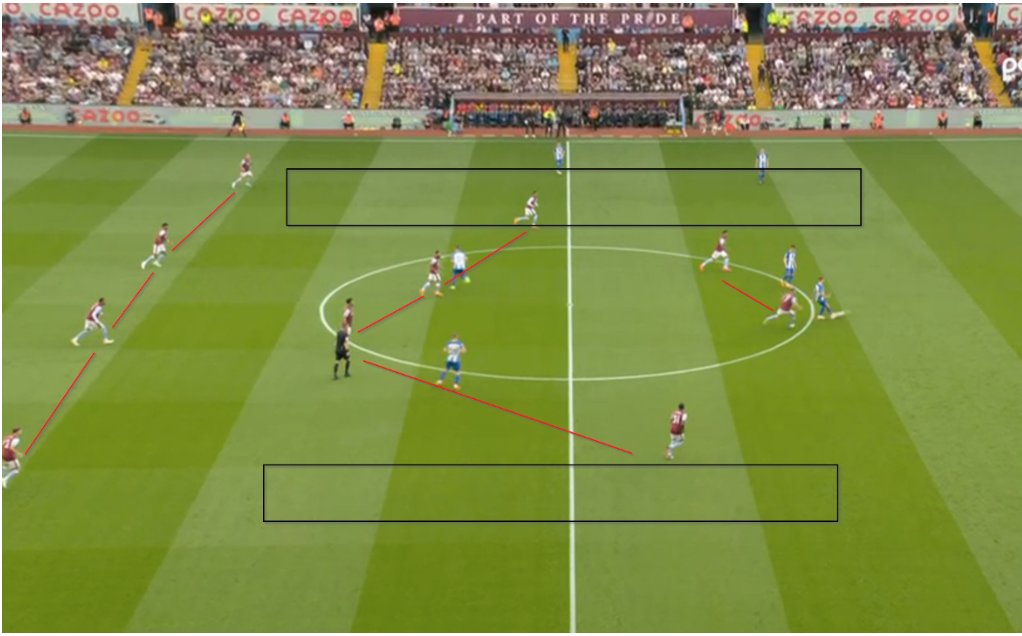
In the midfield, the fielding of two number 6s in Douglas Luiz and Boubacar Kamara helps Emery achieve a complete shutdown of the central area, further reinforcing Emery’s aim of forcing opposition teams as wide as possible. This allows Emery’s teams to be effective against tough opposition such as Manchester City and Bayern Munich, who tend to use width as their main route of attack.
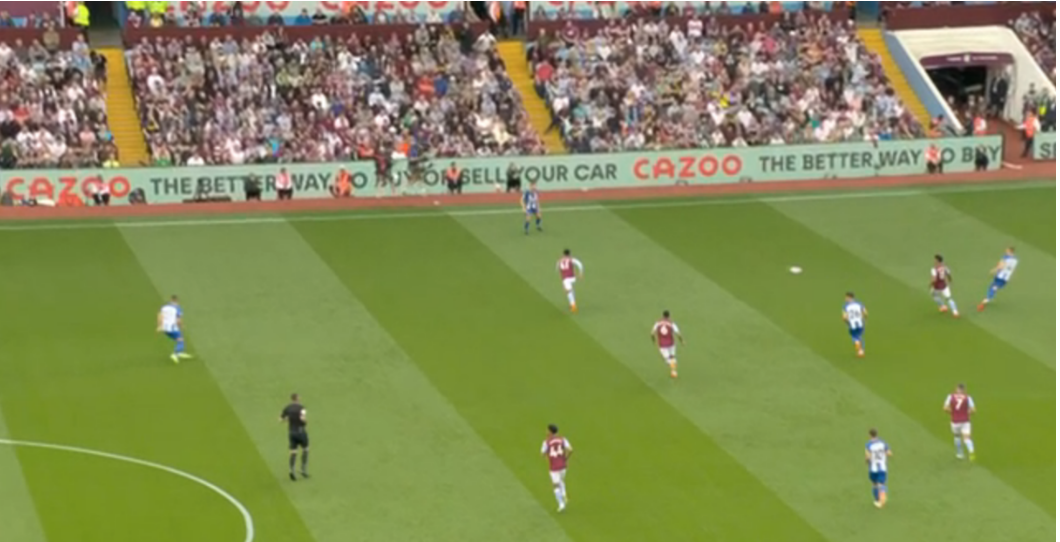
In the above example, Brighton, who play a very wide and spread-out 4-2-3-1, were indeed forced out wide, however due to Aston Villa’s excellence in defending central areas and incredible defensive discipline, Brighton were denied a way out and were completely shut down. The midfield being filled with defensive-minded midfielders allows for complete discipline off the ball.
In fact, this is evident as according to Opta, Aston Villa players have committed fewer errors than Arsenal, Chelsea, Tottenham, Liverpool and Brighton, with whom Villa are competing for top six. The picture below shows the central-half space are behind the midfield line is completely guarded, with Jacob Ramsey staying tight and not jumping into tackles, with Douglas Luiz and Boubacar Kamara as cover.
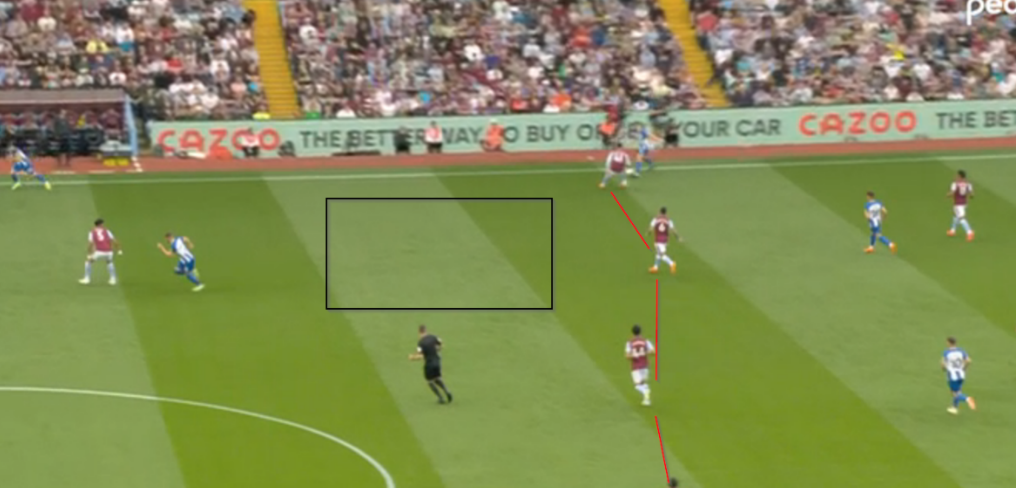
One of the most impressive features of a team coached by Emery, is the sheer intensity of the counter press. As mentioned before, the 4-4-2 allows for the front 4 to conduct a high level of man-to-man press. However, as shown above here, Emery focuses more on zonal marking in order to keep the compact shape. As Brighton move the ball to the right flank, Jacob Ramsey, the left-sided mezzala, leads the press while Douglas Luiz and the left-sided striker of the front two, Ollie Watkins provide support.
Further proof of the intensity of Aston Villa’s pressing is the level of passes per defensive action (PPDA) they obtained as Emery was hired. In Aston Villa’s 3-1 win against Manchester United, almost a month after Emery was first hired, Aston Villa registered an average PPDA of 11.6 throughout the 90 minutes, which shows just how high Emery’s teams press. However, with the busy schedule that players follow, this might not be totally sustainable in the long run.
In fact in the reverse fixture at Old Trafford, after a 3 game run in the space of 8 days, the incredible fatigue evident in the players was also evident in the statistics, as Aston Villa registered 24 passes allowed per defensive action (PPDA) which was their third-lowest pressing intensity of the season, highlighting how little they got tight to United out of possession according to The Athletic.
Build-up Phase
From looking and analyzing teams that have been coached by Emery, he prefers to build up play from the goalkeeper. Emery does, however, prefer a more direct style of build-up play, with the aim of taking advantage of the space behind the opposition midfield that has been created by building up play from the goalkeeper.
As you can see in the picture below, once the centre back passes to Emi Martinez with the ball, the two centre backs split and provide passing options to progress the play either back in the midfield or to the flanks. Also as shown, the Brighton striker automatically goes for the press to the goalkeeper leaving the centre backs unmarked, which is ultimately the aim.
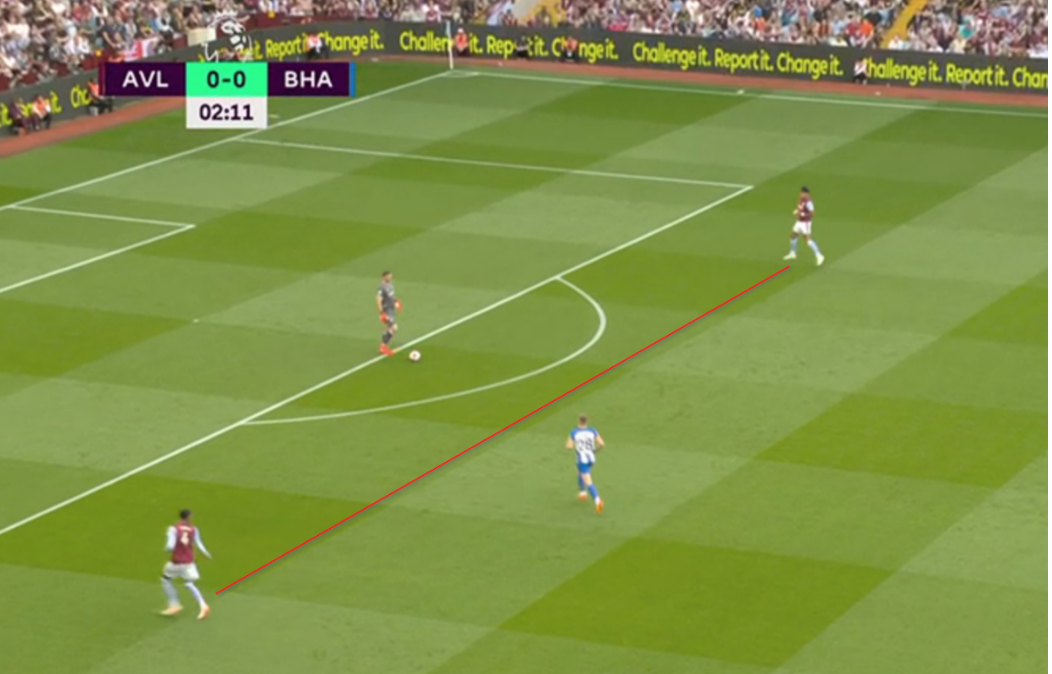
Shown in the shot below is the initial step in Emery’s aim to expose space behind the opposition’s midfield. Here, Emiliano Martinez chooses to pass to the oncoming number 6, Douglas Luiz, in order to avoid passing to either centre backs directly. As the opposition forwards follow the ball, Luiz is then given the two centre backs as legitimate passing options to progress play.
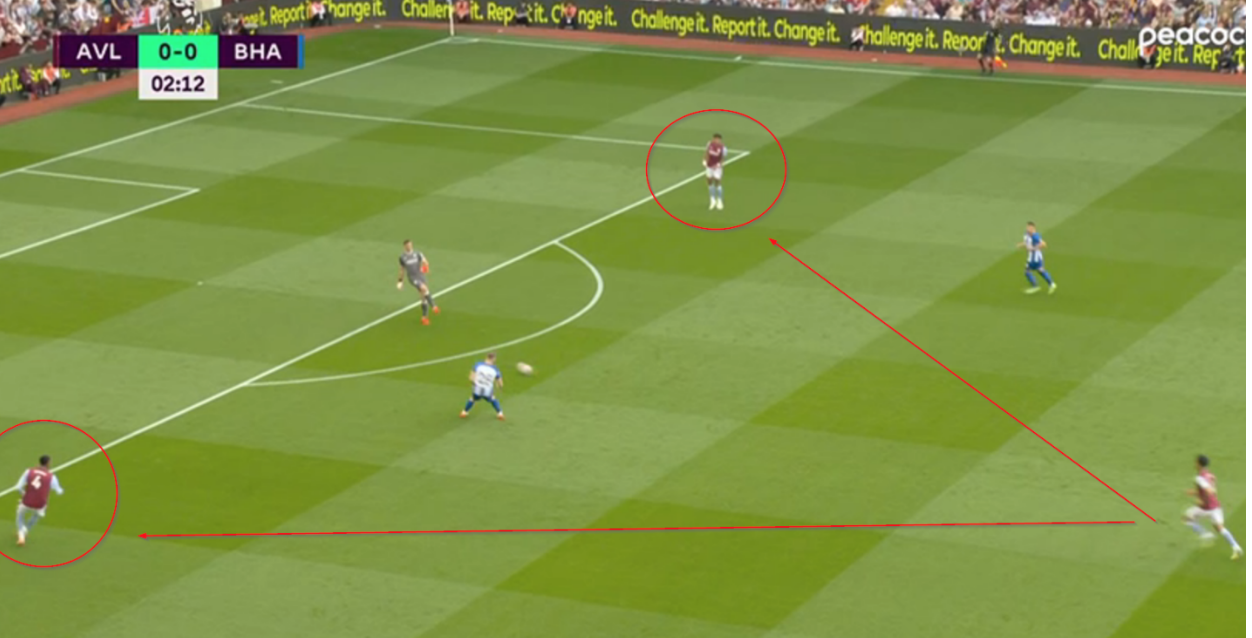
One popular feature of Emery’s build-up play, that many managers in the Premier League have adopted, is the use of pass triggers. These triggers are made up of a series of pressing triggers and movements that opposition players have been instructed to conduct. Pass triggers aim to rectify the efficiency of pressing triggers very effectively. Of course to my previous point, one of these pressing triggers from the point of view of the opposition would be the goalkeeper obtaining the ball, in which in the shot above, Brighton forwards obliged.
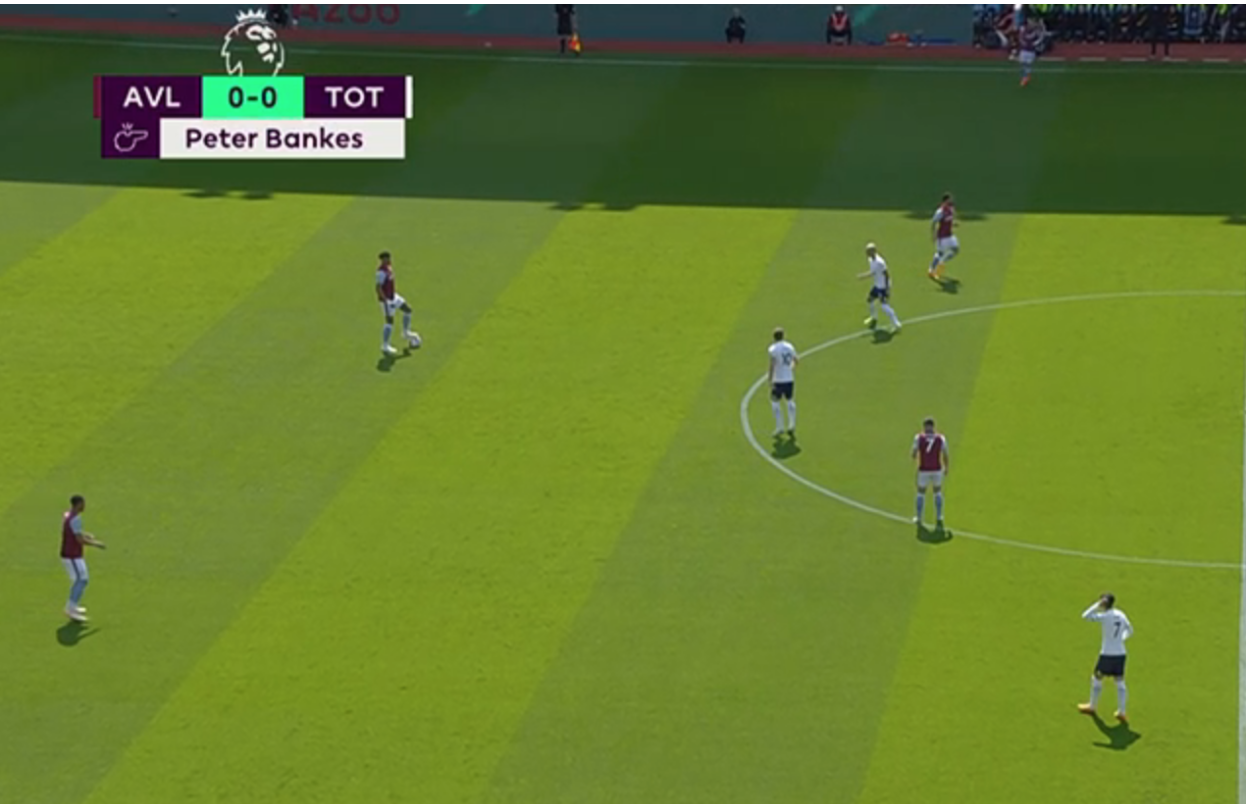
However, one of the most popular and most influential pressing triggers and also on the contrary a popular pass trigger bait is the “studs on the ball” action. As shown in the above shot, Tyrone Mings aims to break Tottenham’s defensive shape by baiting either Harry Kane or Richarlison to press them, which then results in the pressing trigger. As shown in the shot below, once Richarlison takes the bait and presses, Mings automatically sends the ball to the left-back, progressing the play up the pitch.
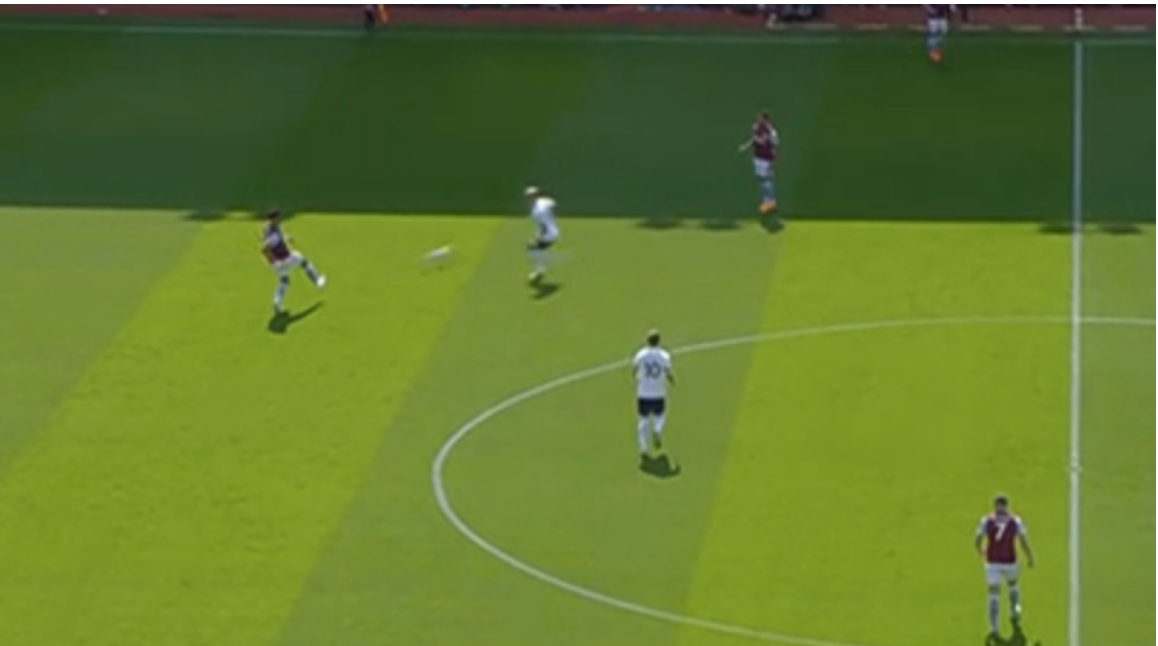
Attacking Play
The way Unai Emery’s teams continue to perform so efficiently in both the defensive and attacking aspects is quite remarkable. Of course, as highly regarded for his defensive coaching as he is, Emery’s teams also display efficient attacking patterns that helps them achieve the perfect balance. Of course, his being regarded as a defensive coach does not mean he is risk-averse with his coaching. As established, Emery does prefer his teams to start the build-up from the goalkeeper and when off the ball, to play on the counterattack, where the rigorous counter-pressing thrives.
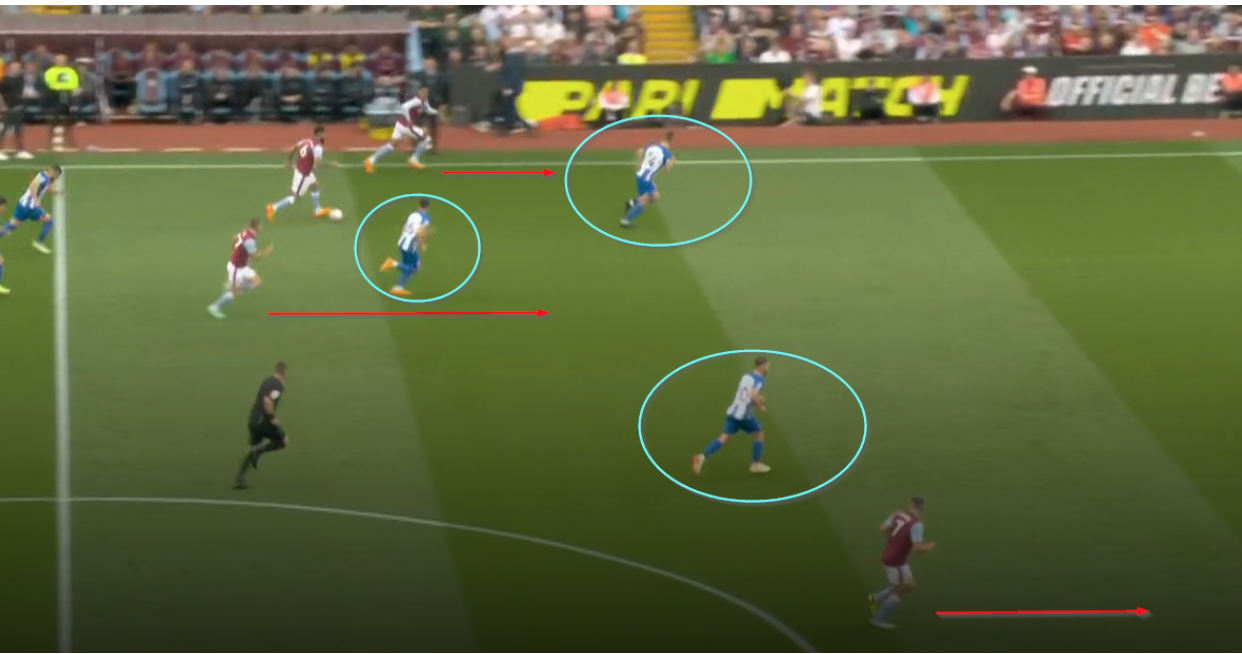
As shown in the shot above, Brighton, who play an intensely high line with high pressure, fall victim to the counter press machine that is Aston Villa. As Digne wins the ball in the left half-space, Douglas Luiz, the nearest number 6 to the ball winner carries the ball. Digne then continues and makes an underlapping run, while Jacob Ramsey, the left mezzala then takes a wide position and performs an overlapping run. Not only does this give Douglas Luiz more than one passing option almost instantly, but because John McGinn is taking a more compact position from the right, Brighton are now forced into a 4v3, which ultimately led to them conceding a goal.
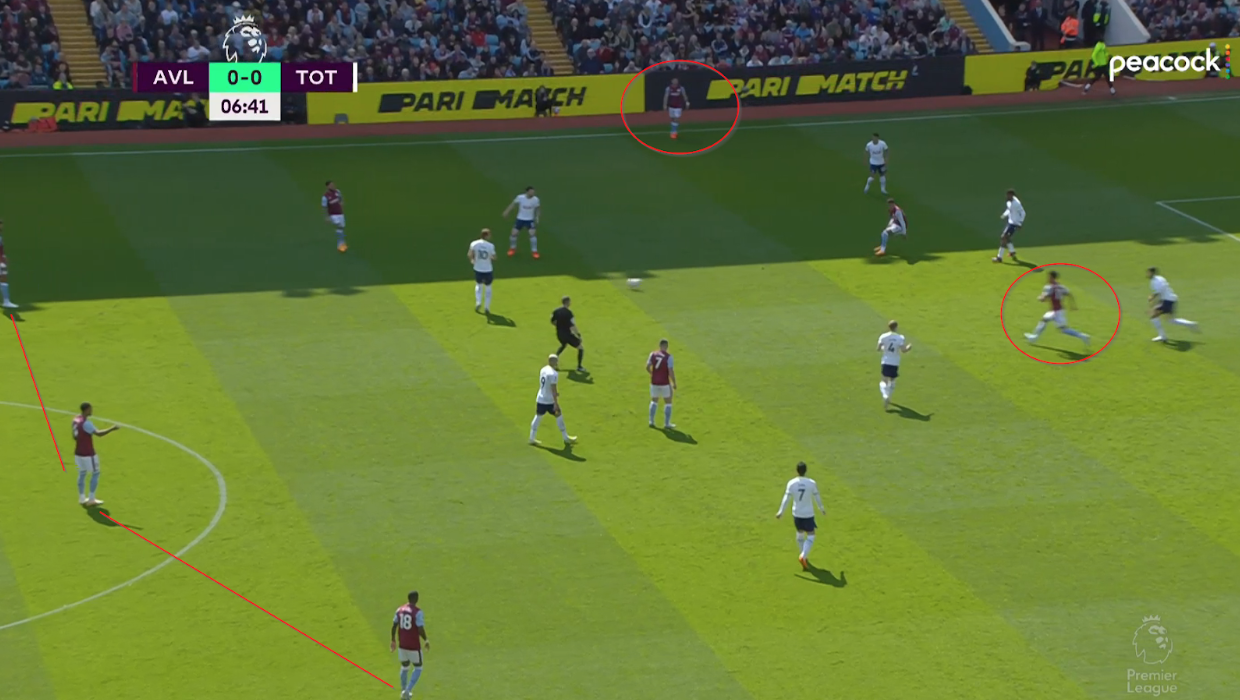
Above is also another perfect example of how intense Aston Villa’s pressure is when attacking the box. The incredibly high defensive line in the build-up, right before the attack, is made up of a back 4, which switches into a back three in attack. Ezri Konsa is the libero, with Ashley Young and Tyrone Mings on the right and left respectively. This allows for Alex Moreno, a highly attacking fullback, to push up, while Douglas Luiz drops into the halfspace and starts to orchestrate. In this specific case, Ollie Watkins drops deep to receive while Jacob Ramsey, the left-sided mezzala, tucks into the half-space to overlap Watkins’ flick.
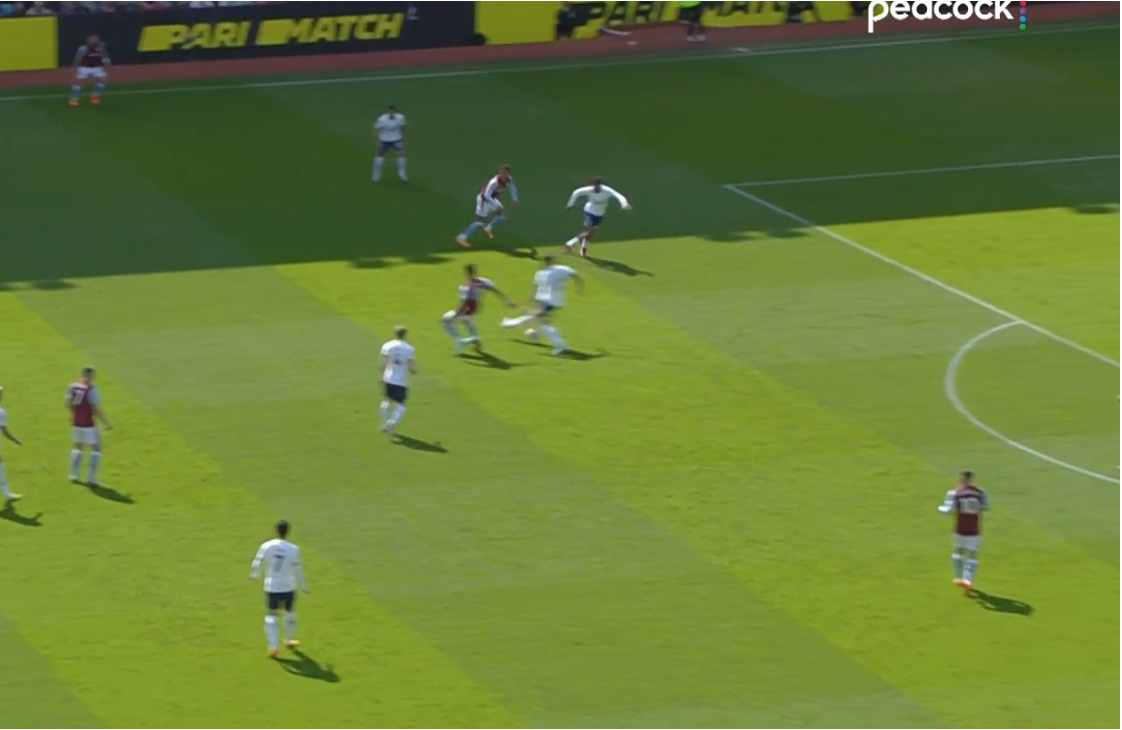
This sequence happens again, this time resulting in a goal. As shown above, after winning the ball early, Alex Moreno carries the ball and pushes up, while Watkins comes deep to flight on the underlapping Jacob Ramsey, who has made this half-space his territory. He carries the ball while Leon Bailey, fielded on the right flank this time, overlaps Buendia’s dummy run. Ramsey then follows the attack all the way, which pays off as Bailey cut back was met by Ramsey’s beautiful diagonal run.
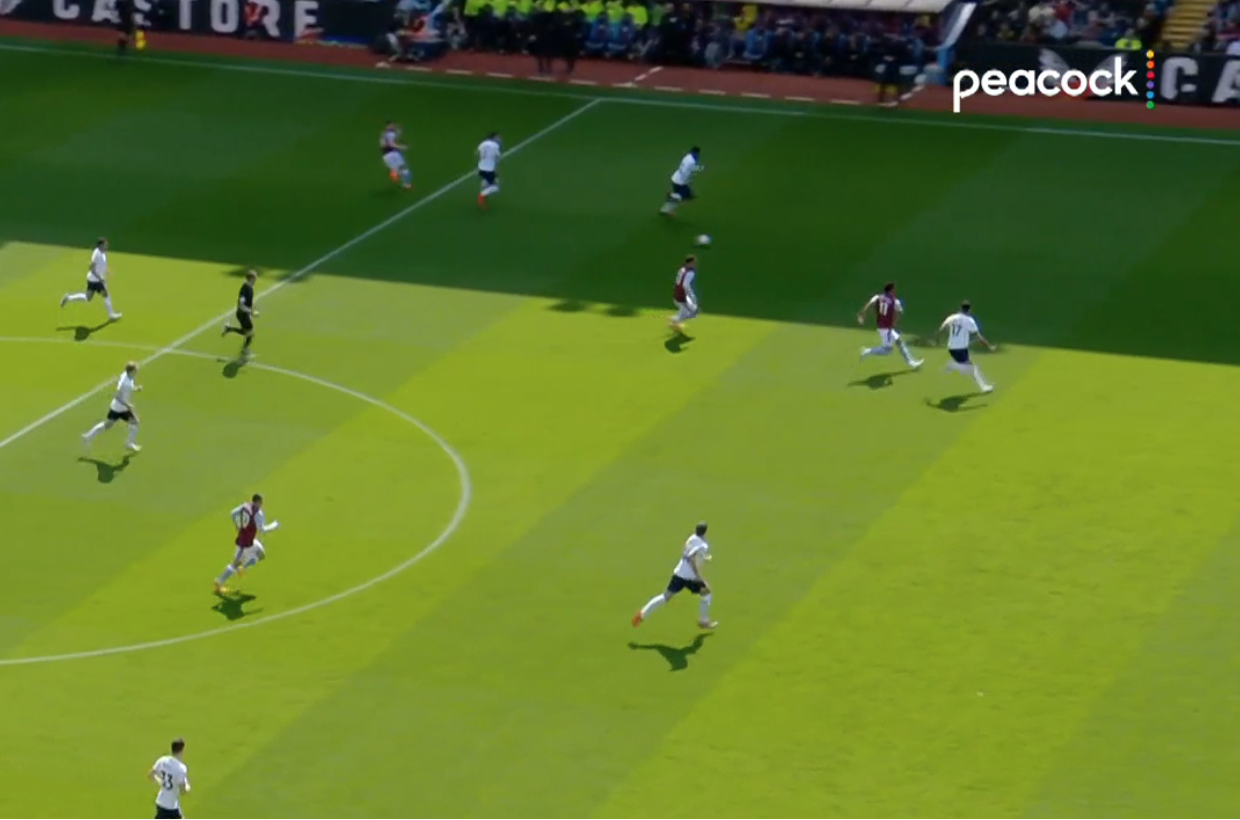
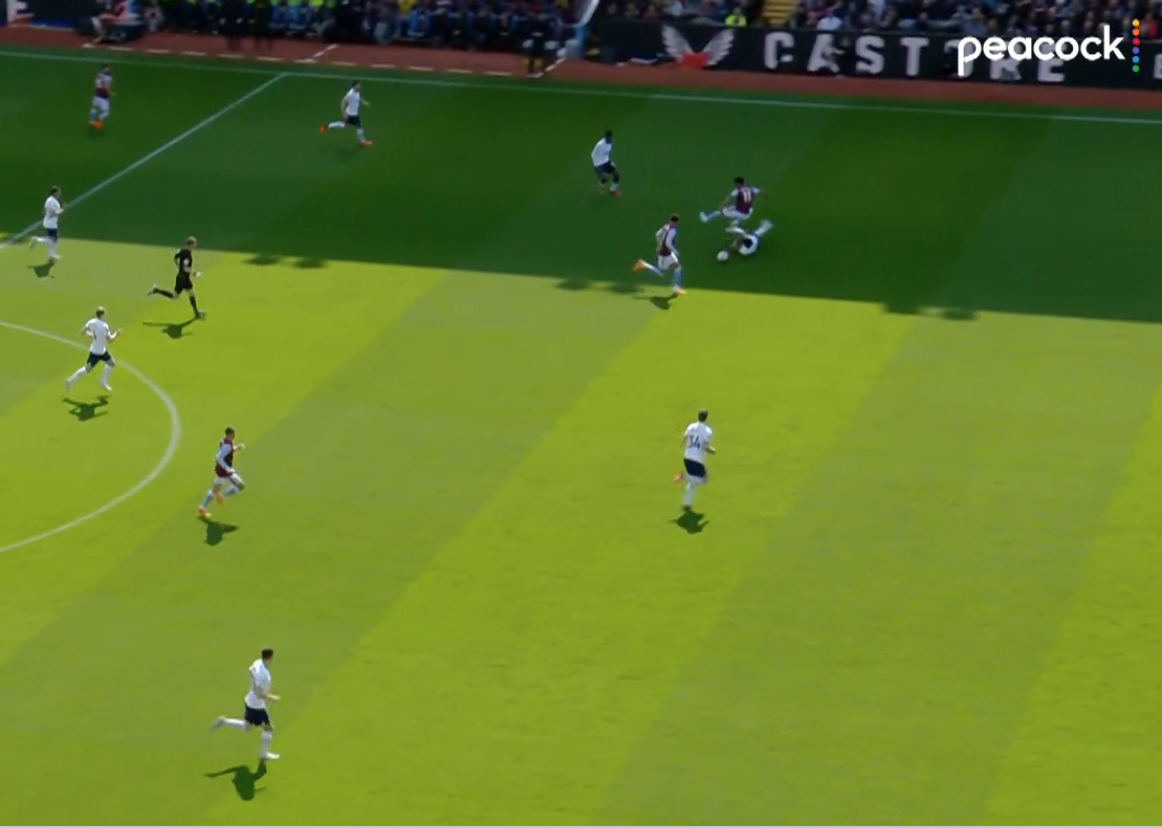
Unai Emery’s use of Ramsey has been incredible. According to Infogol, in this season’s Premier League, Jacob Ramsey has 10 shots on target from a total of 20 shots and has scored 5 goals (3.48 xG). He also averaged 26 passes per match with a pass completion rate of 85% and registered 7 assists, a much higher upgrade than his one assist under Steven Gerrard in 2021/22.
Three years after narrowly avoiding relegation in their return to the Premier League, Aston Villa are headed for Europe for the first time in 13 years. Having taken charge in October with the club hovering above the relegation zone, Unai Emery has guided them to a seventh-place finish and qualification to the Europa Conference League, and he’ll be looking to continue his impressive start at a Villa side that has signed Youri Tielemans on a free transfer and added Monchi as their new President of Football Operations.
By: @aabousen99
Featured Image: @GabFoligno / Barrington Coombs – PA Images
